Panasonic 3D Camcorder: Show Us the Money
Story Highlights
In the 3D-in-the-Home “supersession” at next week’s HPA Tech Retreat, one presentation is titled “Are You Nuts?” I thought of that at today’s Panasonic pre-NAB press conference.
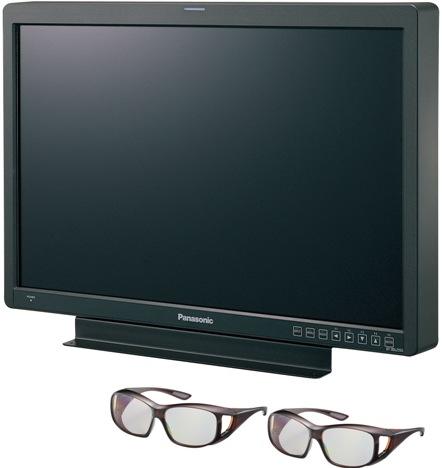
Panasonic's $9900 BT-3DL2550 monitor uses passive cross-polarized glasses
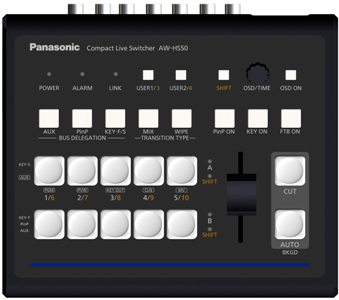
The Tiny AW-HS50 HD switcher includes a multiviewer
Let me emphasize from the outset that I was not thinking about Panasonic in the “nuts” category. As best I could tell, no one from the company lied, which is my highest praise at press conferences. No one avoided questions. There was legitimate news (such as an inexpensive P2-to-USB adaptor, two tiny HD switchers, and a small HD pan-tilt-zoom camera optimized for IP networks). I also think Panasonic builds good equipment.
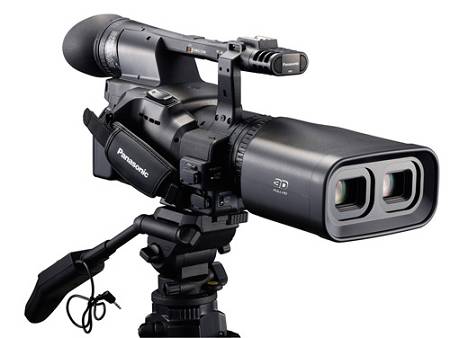
No, the people I thought were nuts were some potential customers for something the company sort of unveiled at the recent Consumer Electronics Show (CES), an integrated (one-piece) 3D camcorder (shown above) to be delivered this fall at a list price of $21,000. Panasonic said it had received thousands of inquiries about the product, some seeking to buy it sight unseen.
It was those blind-faith customers that I think are nuts. Here’s why (and also why I said Panasonic only “sort of” unveiled the product at CES):
The camcorder has twin zoom lenses. What is their widest angle? Their tightest? Panasonic representatives at the meeting didn’t avoid the question; they said it hadn’t been determined yet.
The camcorder will be capable of some amount of stereoscopic convergence. How much? Again, it has not yet been decided. Also undecided, for this one-person, compact camcorder, is whether or not there will be any mechanism to tie convergence to focus.
One Panasonic representative did point out that the spacing of the lens centers is smaller than that of an adult human’s pupils and will not be getting bigger. Based on a rough measurement I made, it appears to be about 57 mm. That puts an outer limit on the maximum diameter of the lenses, which, coupled with the fact that the system uses 1/4-inch-format image sensors, means it will not be the most sensitive camcorder on the market.
When a journalist at the press conference inquired about using the camcorder for cinema content, a Panasonic representative emphasized that it had those 1/4-inch-format image sensors. He got high points from me for that answer.
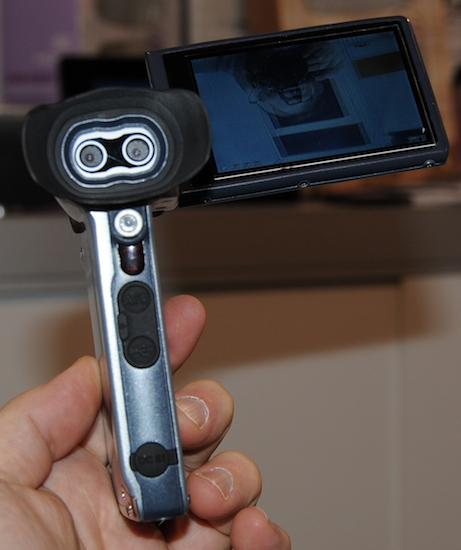 So what is the intended market? At $21,000, it seems priced too high for most consumers. At CES DXG showed a pocket-sized $400 3D camcorder (shown here to the left) with a 3D viewfinder (something Panasonic’s AG-3DA1 lacks), albeit non-HD and with much smaller lens-center spacing.
So what is the intended market? At $21,000, it seems priced too high for most consumers. At CES DXG showed a pocket-sized $400 3D camcorder (shown here to the left) with a 3D viewfinder (something Panasonic’s AG-3DA1 lacks), albeit non-HD and with much smaller lens-center spacing.
In the professional, HD realm, 3D-One offers four 3D camcorder models, all with nominal adult-vision lens spacing, 3D viewfinders, larger image sensors, and specified lenses and convergence. Their CP-20 is shown below. I wrote about them here in September: http://schubincafe.com/blog/2009/09/walkin-in-a-camera-wonderland/
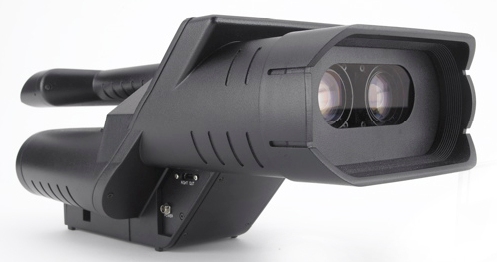
At the press conference, Panasonic indicated receiving inquiries ranging from dental to military applications, including sports. But a 57-mm lens-center spacing doesn’t lend itself to long-distance 3D shooting in a sports venue.
So, who is really interested in buying what Panasonic says will be a made-to-order product? At the press conference, the company announced a way to find out. Starting today, they will accept orders for this device of unknown optical capabilities, but each order is to be accompanied by a non-refundable $1000 deposit.
Panasonic hopes to learn much from this first-generation product. Maybe we all will.
